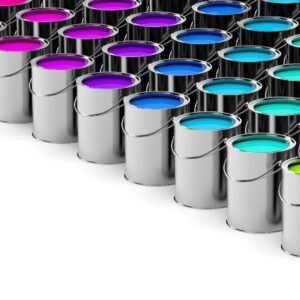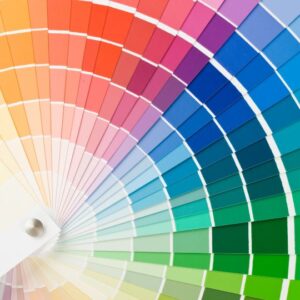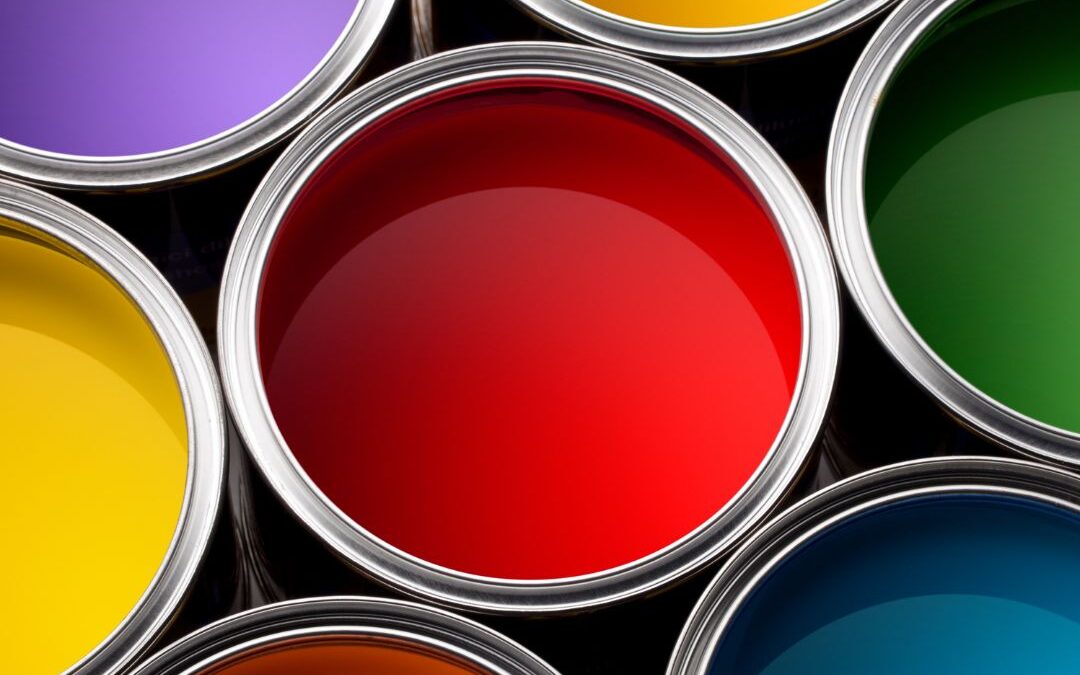When it comes to buying paint, many people only think about the color. Yes, that’s certainly a major point to consider. You want to pick a color for your project that looks nice, fits with your overall décor, and isn’t something you’ll hate in a few months. But there’s more to it than that. There are also various sheens of paint to consider. Some of these sheens are perfect for certain projects, while others won’t give you the look you want. If you’re unfamiliar with these types of paints, this guide will help give you a good idea of which type of paint you need for which project.
Interior and Exterior Paint
The first decision you’ll need to make is whether you want interior or exterior paint. This sounds like it would be a very easy decision—are you painting the inside or outside of your home? However, there are a few times when exterior paint may be the better option for an interior project. If your home has exposed brick in the house or a brick fireplace and you want to paint it, it is often the best option to use an exterior paint made for brick.
Brick is very porous, which means it’s going to absorb a lot of paint. You may have to do multiple coats of interior paint to get the look you want. If you use a brick primer and then follow it up with exterior brick paint, you can complete this project more easily and without spending as much money.
Concrete blocks, walls, planters, and anything else made from concrete are the same. An exterior paint designed for concrete typically works better than interior paint.
Interior paint is designed for drywall and other surfaces that will be protected from the elements. Usually, using it on things that will be left outside doesn’t work out so well. The paint will fade or become chipped very quickly, especially if bad weather comes through. Interior paint may work better than some exterior options if you have decorative tile outside. Don’t use this on floor tile, though. Even inside, regular paint on tiles isn’t a good idea unless you are handcrafting the tiles and finishing them by baking and glazing them.
Is Oil-Based or Water-Based Paint Better?
Paints are typically divided into water-based and oil-based, though you may find some labeled latex-based. Latex paint is a type of water-based paint, though, and can typically be used for the same projects.
Oil-based paints are durable and great for things that are going to experience wear and tear. For example, many people use oil-based paints to paint the trim in their house because it gets touched or bumped into more often than the walls do. You can, of course, use oil-based paint on the interior walls of your home, but be aware that these paints are designed to last. If you decide to paint over the walls in a few years, you’re likely going to need to use several coats of primer and paint.
On the other hand, water-based paints aren’t as durable or long-lasting, but they’re easier to apply than oil-based paints. They’re also much easier to clean up, so accidental spills won’t be a problem. That’s why they’re often used for interior walls and other projects that will be inside. They also dry very quickly, so they’re good for projects that will need multiple coats or layers. Water-based paints are a good option if you need a project completed quickly and aren’t worried about it holding up to the elements.
While they’re water-based, latex-based paints do have a few advantages over water-based options. They use a mixture of chemicals that make the paint more durable. Since the chemical composition can be changed, latex-based paints can be formulated to adhere to specific surfaces. For example, you’ll find latex paints made specifically for flooring or siding. These paints can be the best option since they’re made to be used on those exact materials.
Selecting the Right Sheen
Sheen is perhaps the part of paint selection with which people are most unfamiliar. Sheen refers to how much light the dried paint will reflect. In some cases, you may want to have a lot of sheen, while in other cases, you may not want the finished paint to have any shine to it at all. Let’s take a look at the sheen options and what projects they can be used for.
Flat Paint
As the name suggests, flat paint appears dull and flat when dried. There is no shine to it at all. This actually has a number of uses. For one, shinier sheens tend to show damage or imperfections in the material, while flat paint doesn’t. This makes it good for walls, especially drywall that may have a few damaged spots. However, flat paint isn’t good for high-traffic areas and can be damaged easily. That means you won’t want to use it on trim, hallways, or entryway walls. If you’re going to paint your ceiling, however, flat paint is a great option. You may not have thought about doing that, but a painted ceiling can be a great way to transform a room’s look.
Matte Paint
Matte paint has a bit more of a shine to it than flat paint, but it’s still fairly dull. It’s more durable than flat paint, though, so it’s often used for walls. Again, it’s not going to stand up to a lot of traffic, but it can do well in a home office or guest room. It’s another good option for ceiling, too. Like flat paint, a matte sheen can do a good job at hiding any imperfections.
Eggshell
Eggshell is a popular choice for walls and other interior paint projects. It has a bit of a sheen to it, but it’s not glossy at all. It’s about in the middle as far as durability goes, which is why many people use it for walls. It won’t reflect a lot of light, but it will give the room a bit of a shine. This can be very helpful for rooms that don’t have a lot of natural light since the shininess will help brighten the space.
Satin
Another good option for walls is satin. It’s shinier than eggshell but also a little more durable. It’s a versatile sheen that can easily be cleaned while also looking very nice. It’s a good option for high-traffic areas or children’s rooms. Satin is a good finish for cabinets and doors, too. Of course, because it’s higher on the sheen scale, it will show more imperfections.
Semi-Gloss
Semi-gloss is almost at the top of the list of shiny sheens, but it’s not quite as shiny as you can get. It’s a great sheen for spaces that get a lot of use because it is durable and will do a good job of hiding imperfections. It can hold up to cleaning and scrubbing, so it won’t be a problem cleaning a wall painting with a semi-gloss paint. It’s also good with moisture, so it’s a great option for bathrooms and kitchens. It can work well on metals, too, which is why many people use it on their gutters. It can even be a good choice for painting garage doors and other exterior items.
Gloss
Finally, gloss paint is the shiniest and tends to be the most expensive. It’s very durable, but it also shows imperfections. The pros and cons of different sheens are all set to the extreme with gloss. If you want a space to look great and withstand a lot of damage, gloss is the way to go. You’ll just want to make certain the walls are smoothed out and that any damage is dealt with first because imperfections are going to be very easy to see. Gloss can be used for cabinets, trim, furniture, front doors, molding, and areas that get a lot of traffic.
What Options Are Right for You?
Trying to decide which sheen is right for you? If you’re uncertain about a matte or an eggshell, you could get two sample-sized containers and see how they look. Some people simply go with an eggshell or satin because they’re in the middle, and that can be fine, too. However, don’t avoid flat or gloss just because they’re the extreme sheens. They have their time and place.
Ask the Experts
If you aren’t certain whether to use oil-based or water-based paint or which sheen is right for you, why not take a step back and let the experts handle it? JLM Painting has years of experience in interior and exterior painting. Whether you need a few rooms in your home painted or want to give your retail space a makeover, we’re here to help. We will assist you in selecting the right type of paint to use and then handle all of the paint, including the cleanup. When we’re done, your space will have been transformed. We can even handle HOAs and their color restrictions.
Want to know more? Give us a call today at 707-782-3652.

